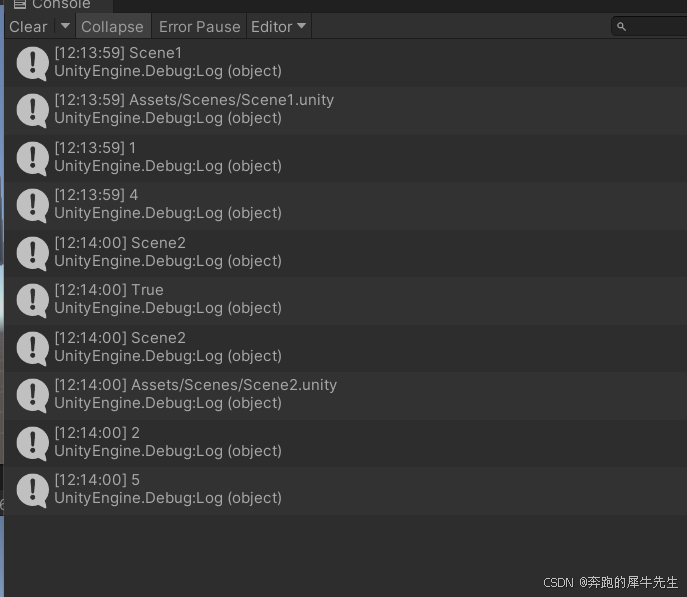Python递归函数深度解析:从原理到实战
递归是计算机科学中重要的编程范式,也是算法设计的核心思想之一。本文将通过20+实战案例,带你深入理解Python递归函数的精髓,掌握递归算法的实现技巧。
一、递归函数核心原理
1.1 递归三要素
- 基线条件:递归终止的条件
- 递归条件:问题分解的规则
- 状态传递:参数的状态变化
简单点说就是:自己调用自己,必须要有出口
1.2 执行过程解析
python">def countdown(n):if n <= 0: # 基线条件print("Lift off!")else: # 递归条件print(n)countdown(n-1) # 状态传递countdown(3)
"""
输出:
3
2
1
Lift off!
"""
二、基础递归模式
2.1 数值计算
阶乘计算
python">def factorial(n):return 1 if n == 1 else n * factorial(n-1)print(factorial(5)) # 120
斐波那契数列
python">def fib(n):return n if n <= 1 else fib(n-1) + fib(n-2)print([fib(i) for i in range(10)])
# [0, 1, 1, 2, 3, 5, 8, 13, 21, 34]
2.2 字符串处理
反转字符串
python">def reverse_str(s):return s if len(s) <= 1 else reverse_str(s[1:]) + s[0]print(reverse_str("hello")) # olleh
回文判断
python">def is_palindrome(s):if len(s) < 2:return Trueif s[0] != s[-1]:return Falsereturn is_palindrome(s[1:-1])print(is_palindrome("madam")) # True
三、数据结构处理
3.1 列表深度处理
python">def deep_sum(arr):total = 0for item in arr:if isinstance(item, list):total += deep_sum(item)else:total += itemreturn totalnested_list = [1, [2, [3, 4], 5], 6]
print(deep_sum(nested_list)) # 21
3.2 字典树遍历
python">def traverse_tree(node, level=0):print(' '*level + node['name'])for child in node.get('children', []):traverse_tree(child, level+1)tree = {'name': 'Root','children': [{'name': 'Child1'},{'name': 'Child2', 'children': [{'name': 'Grandchild'}]}]
}traverse_tree(tree)
"""
输出:
RootChild1Child2Grandchild
"""
四、经典算法实现
4.1 汉诺塔问题
python">def hanoi(n, source, target, auxiliary):if n > 0:hanoi(n-1, source, auxiliary, target)print(f"移动圆盘 {n} 从 {source} 到 {target}")hanoi(n-1, auxiliary, target, source)hanoi(3, 'A', 'C', 'B')
"""
输出:
移动圆盘 1 从 A 到 C
移动圆盘 2 从 A 到 B
移动圆盘 1 从 C 到 B
移动圆盘 3 从 A 到 C
移动圆盘 1 从 B 到 A
移动圆盘 2 从 B 到 C
移动圆盘 1 从 A 到 C
"""
4.2 快速排序
python">def quicksort(arr):if len(arr) <= 1:return arrpivot = arr[len(arr)//2]left = [x for x in arr if x < pivot]middle = [x for x in arr if x == pivot]right = [x for x in arr if x > pivot]return quicksort(left) + middle + quicksort(right)print(quicksort([3,6,8,10,1,2,1])) # [1, 1, 2, 3, 6, 8, 10]
五、高级递归技巧
5.1 记忆化优化
python">from functools import lru_cache@lru_cache(maxsize=None)
def fibonacci(n):return n if n <= 1 else fibonacci(n-1) + fibonacci(n-2)print(fibonacci(50)) # 12586269025(无优化时无法计算)
5.2 尾递归优化
python">def factorial(n, acc=1):return acc if n == 0 else factorial(n-1, acc*n)print(factorial(5)) # 120
六、递归调试技巧
6.1 调用栈可视化
python">def factorial_debug(n, depth=0):print(f"{' '*depth}-> factorial({n})")if n == 1:result = 1else:result = n * factorial_debug(n-1, depth+1)print(f"{' '*depth}<- {result}")return resultfactorial_debug(3)
"""
输出:
-> factorial(3)-> factorial(2)-> factorial(1)<- 1<- 2
<- 6
"""
七、递归的替代方案
7.1 迭代实现
python">def factorial_iter(n):result = 1for i in range(1, n+1):result *= ireturn resultprint(factorial_iter(5)) # 120
7.2 生成器实现
python">def traverse_tree_iter(node):stack = [(node, 0)]while stack:node, level = stack.pop()yield (node['name'], level)for child in reversed(node.get('children', [])):stack.append((child, level+1))for name, level in traverse_tree_iter(tree):print(' '*level + name)
八、最佳实践与注意事项
8.1 适用场景
- 树形结构处理
- 分治算法
- 数学递推公式
- 回溯算法
8.2 风险规避
- 栈溢出风险(Python默认递归深度约1000层)
- 重复计算问题
- 时间复杂度失控
- 内存占用过高
8.3 性能优化方案
- 使用记忆化缓存(@lru_cache)
- 转换为迭代实现
- 尾递归优化(Python原生不支持,需自行实现)
- 限制递归深度
python">import sysdef safe_recursion(func):def wrapper(*args):wrapper.depth += 1if wrapper.depth > sys.getrecursionlimit() - 100:raise RecursionError("超出安全递归深度")try:return func(*args)finally:wrapper.depth -= 1wrapper.depth = 0return wrapper@safe_recursion
def deep_recursion(n):return 1 if n == 0 else deep_recursion(n-1) + 1
九、递归思维训练
9.1 路径搜索问题
python">def find_path(matrix, start, end, path=[]):path = path + [start]if start == end:return [path]if matrix[start[0]][start[1]] == 0:return []paths = []for direction in [(0,1), (1,0), (0,-1), (-1,0)]:next_pos = (start[0]+direction[0], start[1]+direction[1])if 0 <= next_pos[0] < len(matrix) and \0 <= next_pos[1] < len(matrix[0]) and \next_pos not in path:newpaths = find_path(matrix, next_pos, end, path)paths += newpathsreturn pathsmaze = [[1,1,0,1],[1,1,1,0],[0,1,1,1]
]
print(find_path(maze, (0,0), (2,3)))
十、总结提升
掌握递归不仅是学习编程技巧,更是培养抽象思维和问题分解能力的重要途径。合理运用递归,可以让复杂问题迎刃而解!






